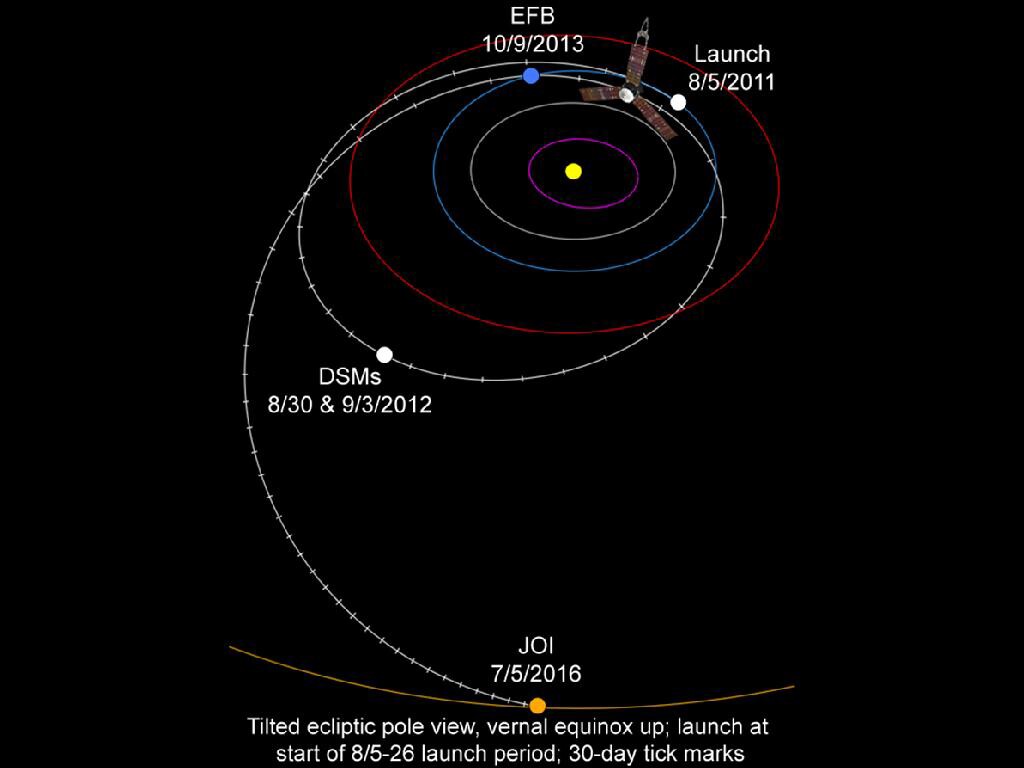Last Friday, NASA's Juno spacecraft launched aboard an Atlas V-551 rocket from Cape Canaveral Air Force Station in Florida beginning its five-year, 1,740 million mile (2,800 million km) journey to our solar system's largest planet, Jupiter. Juno is due to arrive at Jupiter in July 2016, after which it will orbit the gas giant planet's poles 33 times over a period of about a year. The spacecraft's collection of eight science instruments will probe beneath Jupiter's obscuring cloud cover to reveal more about its origins, structure, atmosphere, and magnetosphere, and look for a potential solid planetary core.
NASA says Juno's primary mission to understand the origin and evolution of Jupiter will also answer questions about the formation of our solar system. This will also provide an understanding of planetary systems being discovered around other stars.
Juno's payload includes:
- A gravity/radio science system
These instruments will enable Juno to map Jupiter's magnetic field, observe the planet's auroras, measure the amount of water and ammonia in the deep atmosphere and determine if the planet actually has a solid core. NASA says this will directly resolve the origins of the planet and thereby the solar system. By mapping Jupiter's gravitational and magnetic fields, Juno will reveal the planet's interior structure and measure the mass of the core.
With four large moons and many smaller moons, Jupiter forms its own miniature solar system. Its composition resembles a star's, and if it had been about 80 times more massive, the planet could have become a star instead.

With Jupiter's orbit five times further from the Sun than Earth's, Juno will be the first solar-powered spacecraft designed by NASA to operate at such a great distance from the Sun. Because Jupiter receives 25 times less sunlight than Earth, Juno's solar arrays are the largest on any NASA deep space probe. This is despite Juno's solar panels being 50 percent more efficient than silicon cells available for space missions 20 years ago.
The three solar panels extending outward from Juno's hexagonal body give Juno an overall diameter of about 66 feet (20 m). For launch, the solar arrays were folded into four-hinged segments so the spacecraft would fit into the launch vehicle and were deployed after Juno successfully separated from the Centaur upper stage of the Atlas V rocket.
Except for a few minutes during the Earth flyby gravity assist in October 2013, the solar panels will remain in sunlight through to the end on the mission. However, the mission's power needs are modest, with science instruments requiring full power for only about six hours out of each 11-day orbit. The mission design avoids any eclipses by Jupiter, minimizes radiation exposure and allows all science measurements to be taken with the solar panels facing the sun.
Juno is the second spacecraft designed under NASA's New Frontiers Program, following the Pluto New Horizons mission that launched in January 2006. It is scheduled to complete its mission in October 2017, when it will then deorbit into Jupiter.








